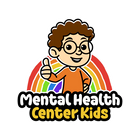|
Key Takeaways:
- CBT teaches children how thoughts, feelings, and actions connect, so they can shift negative thinking.
- These workbooks are written for kids, with visuals, games, and simple language that keep them engaged.
- Parents, teachers, and therapists can use these resources at home, in classrooms, or in therapy sessions.
|
Cognitive Behavioral Therapy (CBT) helps children understand how their thoughts, feelings, and behaviors are connected. Just like a coach enables you to get better at sports, CBT acts as a coach for your mind. It teaches you to recognize when your thoughts aren't helping you and shows you how to change them.
With CBT, you can train your brain to be more positive. CBT workbooks for kids provide structured activities that guide children through the process of identifying and altering negative thought patterns.
These resources are valuable tools for parents, teachers, and therapists aiming to support children's mental health.
CBT Workbooks for Kids
Children can use these workbooks to explore their thoughts and emotions while learning strategies to cope with challenges.
1. Your CBT Thought-Choosing Journey by Mental Health Center Kids

The "Your CBT Thought-Choosing Journey" is a free 22-page digital workbook designed to introduce children to CBT concepts. The resource targets kids aged 6-13 and accompanies a video from the Mental Health Center Kids YouTube channel.
The workbook contains visual materials explaining 15 common automatic negative thoughts (ANTs) and includes 8 interactive worksheets that guide children through identifying negative thought patterns and developing more balanced thinking approaches.
Research shows that CBT programs for youth are more effective when they teach children to challenge negative thoughts and include behavioral activation (doing things that lift their mood) [*].
Workbook features:
-
Creative "ANT" Metaphor: The workbook transforms abstract "Automatic Negative Thoughts" into "ANTs", actual ants that can "crawl into your mind". This concrete metaphor helps children visualize and understand something as complex as cognitive distortions in a way that's both memorable and less intimidating.
- "Thought Detective" Adventure: The entire workbook positions children as "Thought Detectives" with actual detective activities, challenges, and a completion certificate. This gamification makes the therapeutic process feel like an adventure rather than therapy work.
-
Comprehensive Support: The detailed "Tips for Adults" section ensures proper support while still empowering children to develop independent skills. It includes specific guidance on when additional professional help might be needed.
Download the workbook here
2. A CBT Workbook for Children and Adolescents by Gary O’Reilly
This is an 11-part CBT workbook created by Gary O'Reilly from University College Dublin. The resource covers a wide range of therapeutic topics from self-reflection to practical life skills.
Workbook features:
-
Broad Scope: This workbook covers 11 distinct areas, self-awareness and family dynamics, emotional expression and behavioral patterns, cognitive restructuring ("Thinking Straight"), communication and problem-solving skills, relaxation and anger management techniques
-
Progressive Structure: The workbook begins with foundation building (Parts 1-3), where children explore their identity, family dynamics, and personal narrative before moving into emotional and behavioral awareness (Parts 4-5).
The workbook then progresses to core CBT skills (Parts 6-8), including cognitive restructuring and communication, before tying everything together with advanced coping strategies (Parts 9-11), such as relaxation, anger management, and systematic problem-solving.
Download the workbook here
3. CBT Worksheets for Children by Therapist Aid
This is a 4-page worksheet from TherapistAid.com that introduces the fundamental CBT triangle concept to children. The resource focuses specifically on helping kids understand the interconnected relationship between thoughts, feelings, and actions through practical examples and hands-on exercises.
Workbook features:
-
Clear CBT Triangle Foundation: The worksheet excels in one key area. It effectively teaches the core CBT concept that thoughts, feelings, and actions are interconnected. It uses age-appropriate language and relatable scenarios.
- The "upcoming test" example is a great example for kids. It demonstrates how a single thought ("I'm going to fail") creates a cascade of worry and avoidance behaviors.
-
Practical Cognitive Restructuring Exercise: The Emma friendship scenario addresses a common childhood concern (friend acting differently). This teaches kids that situations can be interpreted in multiple ways and that changing thoughts can alter feelings and actions.
-
Therapeutic Simplicity: The focused approach makes it ideal for introducing CBT concepts without overwhelming children. The clear message that "just because you have a thought doesn't mean it's true" is presented in language children can understand and remember.
Download the workbook here
4. Guided Self-Management Tools For Anxiety (Children 6-12) by Boston Children’s Hospital
This 20+ page workbook is developed by clinical psychologists at Boston Children's Hospital and Harvard Medical School. It provides a structured, four-skill approach to anxiety management specifically designed for children ages 6-12, with extensive parent guidance materials included.
Research has shown that anxiety-focused CBT for the youth doesn’t just reduce anxiety. It also helps with depression, behavior problems, and overall functioning [*].
Workbook features:
-
Focus on Anxiety: The workbook specializes in anxiety, which makes it effective for families dealing with worried or anxious children. The exercises are kept simple so kids can remember and use them on their own.
-
Thorough Approach: The workbook provides detailed tips, step-by-step instructions, and answers to common questions parents ask. This thorough approach ensures parents have the knowledge they need to effectively guide their children through anxiety management techniques.
-
Skill-Focused Guidance: The workbook presents anxiety management through four progressive skills: Fear Thermometer (assessment), Relaxation Skills (coping), Thinking Traps (cognitive restructuring), and Facing Your Fears (exposure therapy).
Download the workbook here
5. Your Very Own TF-CBT Workbook by Hendricks, Cohen, Mannarino, Deblinger
This workbook was developed specifically for children who have experienced traumatic events. It is created by the developers of Trauma-Focused Cognitive Behavioral Therapy (TF-CBT). It is written for therapists as a supplement to use in treatment with children who have experienced trauma.
Workbook features:
-
Focus on Trauma Recovery: The workbook is designed to help children heal from traumatic experiences. By targeting trauma specifically, kids get tools that directly address their unique challenges, like feeling unsafe or having scary memories.
-
Helping Kids Understand What Happened: The thinking part of CBT here helps children make sense of their traumatic experience. Kids work through questions like "Why did this happen?" and "Who was responsible?" to develop healthy, accurate thoughts about what occurred rather than blaming themselves or feeling confused.
-
Creative Storytelling as Therapy: Children tell their story about what happened through creative projects like making books, writing songs, or creating puppet shows. This storytelling approach helps kids face their memories gradually and safely.
Download the workbook here
The Bottom Line
CBT workbooks give kids a simple, structured way to practice mental health skills on their own or with adult support. The five resources above cover everything from everyday worries to trauma recovery, and each is completely free to download.
Parents, teachers, and therapists can pick and choose what fits a child’s age, needs, and attention span, whether it’s a short worksheet on the CBT triangle, a playful detective adventure, or a comprehensive guide for managing anxiety and trauma.
The key is consistency: even a few minutes a day with the right workbook can help children recognize unhelpful thoughts, build coping skills, and feel more confident handling life’s challenges.
Feel free to explore the entire CBT worksheets collection at Mental Health Center Kids for additional psycheducation resources on CBT for kids.
References:
- Oud M, de Winter L, Vermeulen-Smit E, et al. Effectiveness of CBT for children and adolescents with depression: A systematic review and meta-regression analysis. European Psychiatry. 2019;57:33-45. doi:10.1016/j.eurpsy.2018.12.008
- L.J. Kreuze, G.H.M. Pijnenborg, Y.B. de Jonge, M.H. Nauta, Cognitive-behavior therapy for children and adolescents with anxiety disorders: A meta-analysis of secondary outcomes, Journal of Anxiety Disorders, Volume 60, 2018, Pages 43-57, ISSN 0887-6185,






















































